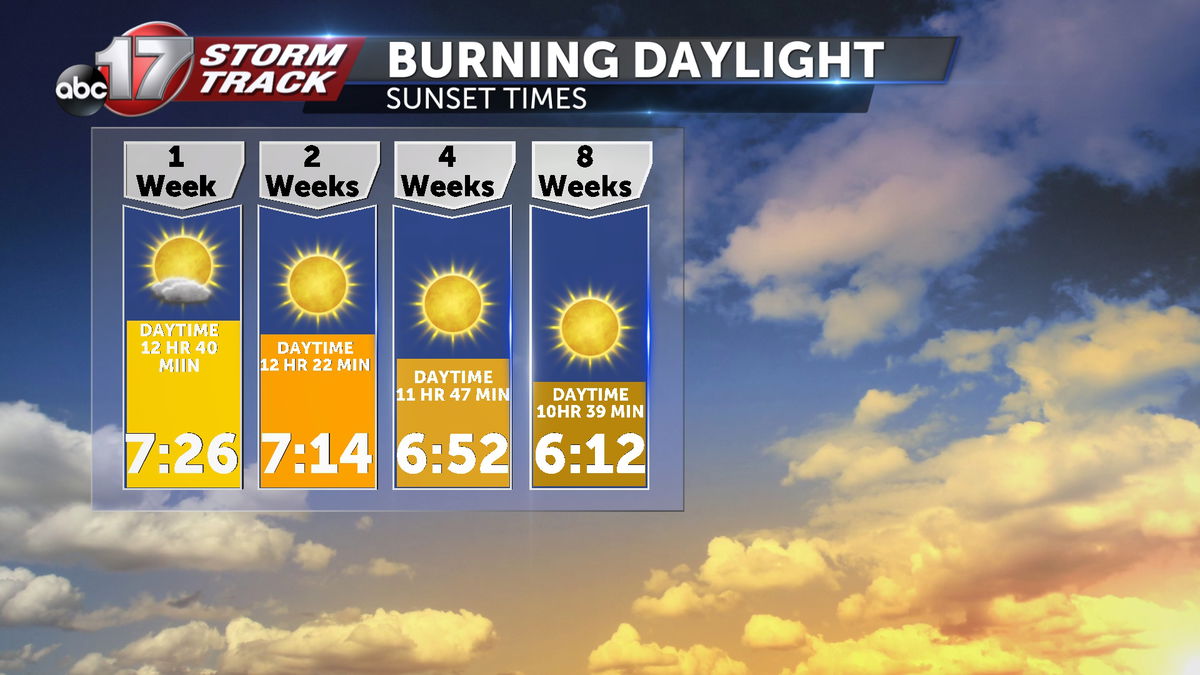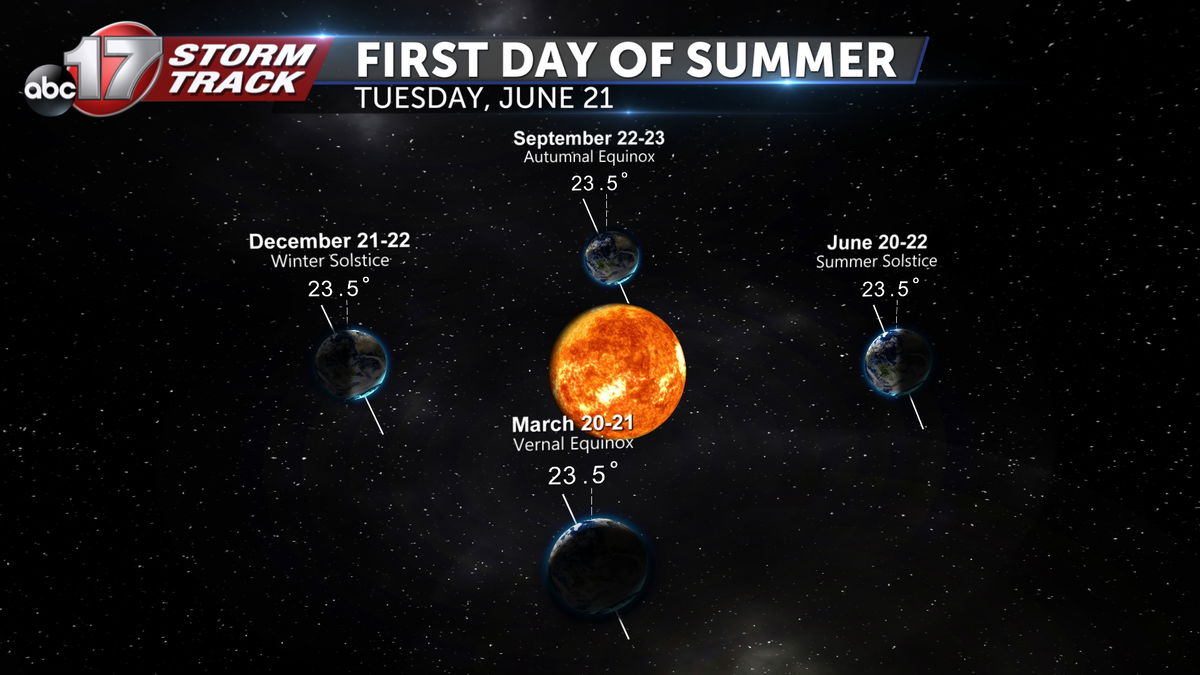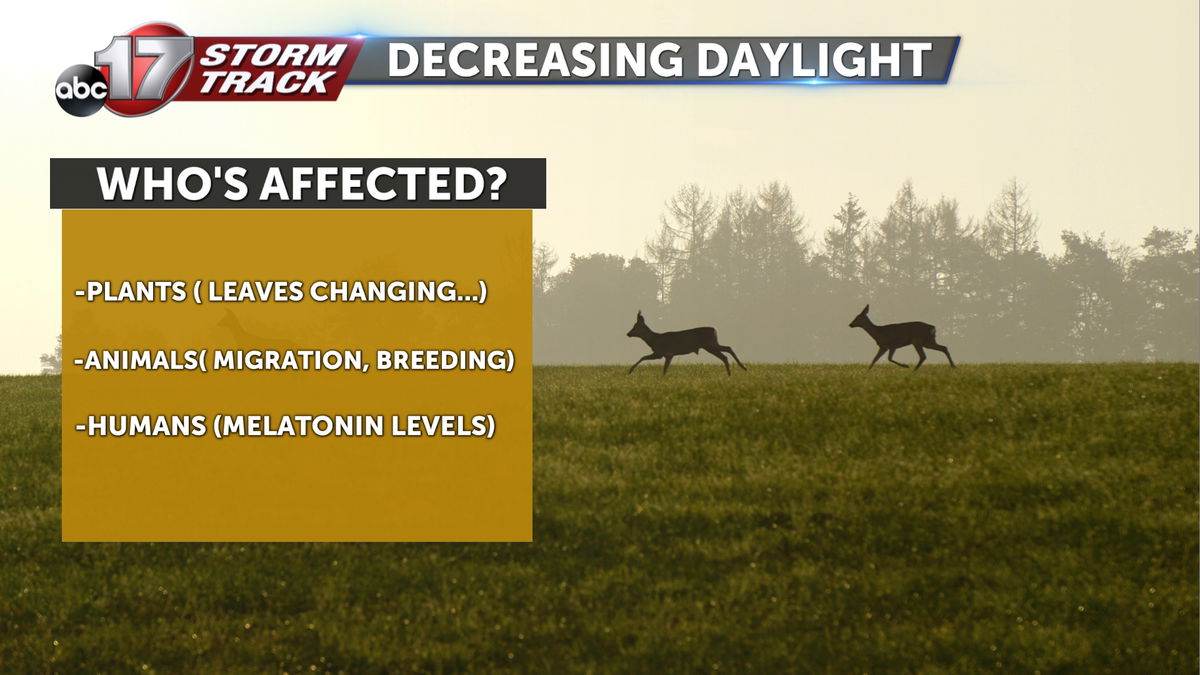The science behind decreasing daylight and earlier sunsets into fall
As the summer solstice pass by this past June, the amount of daylight has decreased each day and the sun has set earlier each evening.

As of this afternoon, there are just short of 13 hours of daylight seen across the northern hemisphere. The sun will also look to set at 7:37 pm.

As the weeks continue on, there mill be more dramatic shifts in the time of daylight we see. In four weeks, the amount of daylight time will have decreased by just over an hour while the sun sets closer 6:52. This will continue to trend downward until the winter solstice towards the end of December.

The reasoning of seeing less daylight as we head from the summer solstice to the winter solstice falls in line with the earths axis at a tilt of 23.5 degrees an its orbit around the sun. As we get closer to being deeper towards fall, the earth's northern hemisphere will slowly face further away from the sun meaning longer overnight hours.

Photoperiod is described as the amount of daylight an organism receives each day in a 24 hour period of time. The photoperiod can influence many living beings factors of life. Leaves dictate their foliage colors based off of this showing their peak natural colors will decreasing amounts of photosynthesis occurring in each 24 hour time period.
Humans can also see a impactful change in their melatonin production during shorter photoperiods. the amount of melatonin produced in humans directly correlates to the amount of daylight we see. This can lead to decreased melatonin production heading deeper into late summer, lasting through mid-winter. This can lead to a more sleepy feeling, sometimes evening affecting hormones.
